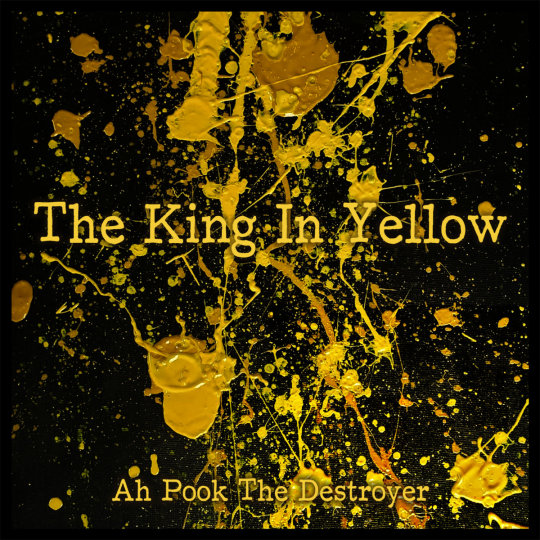The King in Yellow and the War Over the Mind
I think one of the most powerful aspects of Robert W. Chambers's The King in Yellow, and one which sets it apart from a lot of later Weird Fiction about academics who become too invested in the world of the arcane, is the idea that there just isn't anything explainably wrong with the play. People know there's something wrong with it, especially once you get to the second act... but if you just looked at the text itself, you wouldn't find anything.
'No definite principles had been violated in those wicked pages, no doctrine promulgated, no convictions outraged. It could not be judged by any known standard, yet, although it was acknowledged that the supreme note of art had been struck in The King in Yellow, all felt that human nature could not bear the strain, nor thrive on words in which the essence of purest poison lurked.'
The Repairer of Reputations
Despite how central it is, I completely missed it on my first reading (mainly because I was young and grappling with a particularly bad printing of it which made the text really small). I only started to grasp it when I listened to the concept album The King in Yellow by experimental post-rock band "Ah Pook, the Destroyer".

This album is largely inspired by Chamber's work, using that premise - an idea that you can't see but can still cause genuine harm - to talk about the current political climate. Songs touch on a wide array of cults and conspiracies - from the modern-day antisemitic ramblings of Qanon and Lizard People conspiracies to the strong figureheads and interpersonal conflicts of cults like Heaven's Gate. They even find time to touch on the Time Cube somehow, all under the framework of the King in Yellow propagating harmful ideas and bringing about the New Age of Madness.
But it's not as simple as just looking at these people and calling them mad. Okay, sometimes it is that (best exemplified in the gospel stylings of "The Tribulation of Alex Jones"), but there are cases where the characters are presented with genuine empathy, such as in "The Road to Carcosa" where we hear about the life of a man who, through exposure to the Yellow Sign (which here is attached to Right-Wing conspiracy theories) ends up destroying his relationship with his family. The singer gets a moment of lucidity in the refrain "The fall of my life came after; And all of my mind was scattered", though this fades away as we hear the end of this story: Him living alone in a gun-filled squalor.
Another thing that elevates this album is how it turns it all back on the listener. There's obviously a specific audience of Left-leaning listeners a project like this would attract, and those people are very unlikely to also share the beliefs of the average Qanon-minded person, but (much like in the book) it constantly emphasises that the actual specific beliefs don't matter as much as the spread of ideas. This is most visible in the refrain heard throughout the album:
The fall you believe
Is not far as it seems
And the deep can not be so alive
The blithe poison meme
That you did not believe
But you saw and it entered your mind
Belief doesn't matter. Sheer exposure to these toxic ideas means that, in a way, you've already been harmed no matter what you take away from it. This idea is also present in the book, most directly in the story "The Yellow Sign".
In it, Mr. Scott is fully aware of the King in Yellow, but has actively tried to avoid its influence, partially due to the unfortunate fate of Hildred Castaigne (who featured in the story "The Repairer of Reputations" and at the very least wanted to do a monarchist coup of America that would place him as King - all after reading The King in Yellow). By all means, he should be doing the right thing - he has no interest in The King in Yellow and is actively avoiding the play... and it's not like anyone's staging it anymore, so he should be fine... and yet, after strange dreams, an erie watchman, and other bizarre events, he and his model, Tessie, are driven to read it. This is also a story the album quotes right at the start:
'Then, as I fell, I heard Tessie’s soft cry and her spirit fled: and even while falling I longed to follow her, for I knew that the King in Yellow had opened his tattered mantle and there was only God to cry to now.'
The Yellow Sign & Beautitudes
It's an idea I think is also evoked in the structure of the anthology. While the first 4 stories directly feature the King in Yellow in one way or another, the rest are tragic, sometimes supernatural romances with seemingly no connection to the title character, to the point where some reprints just do the first 4 and ignore the rest... though I feel it's deliberate when keeping this idea in mind. While the King is absent, Yellow is a recurring motif throughout the book, often emphasising death or danger, and reminding the reader of that titular presence. You have been exposed to the King in Yellow, and now your mind is his domain.